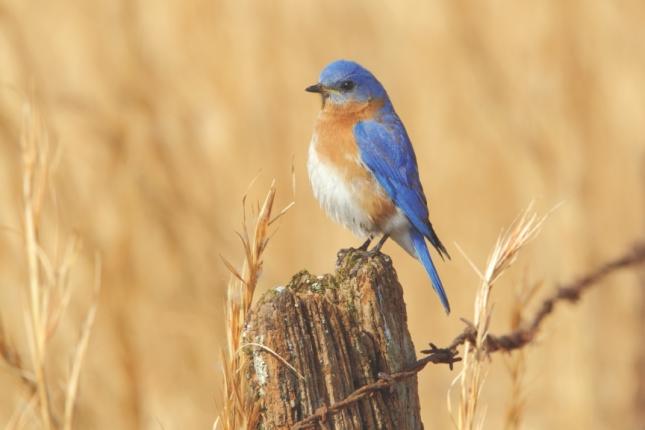House Sparrow Control

We love our bluebirds, so it has been sad to hear customers telling us about House Sparrows taking over bluebird nest boxes. We wanted to share a brief overview of why this is an issue and what steps you can take to fix it.
House Sparrows are a non-native species to the United States. They were introduced from England with the idea that they would be beneficial for insect pest control. The House Sparrows ultimately did not control pests effectively, and the ecological impacts of the population boom are more far-reaching than they could have ever imagined when the birds were introduced. House Sparrows are extremely aggressive towards native bird species, especially when it comes to competing for nesting sites.
The North American Bluebird Society (NABS) states: "it is better to have no nest box than to have one that fledges House Sparrows." They are not protected under the Migratory Bird Treaty Act the way native birds are, and this is the only reason we would encourage nest box owners to interfere if they see a nest box with House Sparrows.
A couple suggestions provided by NABS:
1. Move the location of the nest box to a location with little to no human contact. House Sparrows are notorious synanthropes (survive very well alongside humans). They are less likely to discover a nest box in a rural spot.
2. Sparrow Spookers: these are devices designed to prevent House Sparrows from attacking native birds/fledglings/eggs inside a nest. It includes fluttering pieces of Mylar attached to the roof of a nest box occupied by bluebirds. It has proven very effective in scaring House Sparrows and keeping the bluebirds protected at all times. Designs, instructions, and more info can be found at: http://www.sialis.org/sparrowspooker.htm.
3. House Sparrows are one of the few birds that prefer to eat filler grains in low-quality bird seed like milo and cracked corn. Offering fresh, high quality seed (like ours!) is one way to possibly attract fewer House Sparrows.
These are just a few passive solutions for House Sparrow problems. We recommend checking out the NABS website to learn more, or if you are interested, they offer information about active control methods. It is important to be extremely careful to only interfere with birds you are 100% sure are House Sparrows. The male is easier to recognize than the female; she looks very similar to females of native species. It is our duty as good bird feeders and naturalists to do right by our native birds and keep House Sparrows out of nest boxes.
Good luck! Please feel free to give us a call if you have any more questions!

